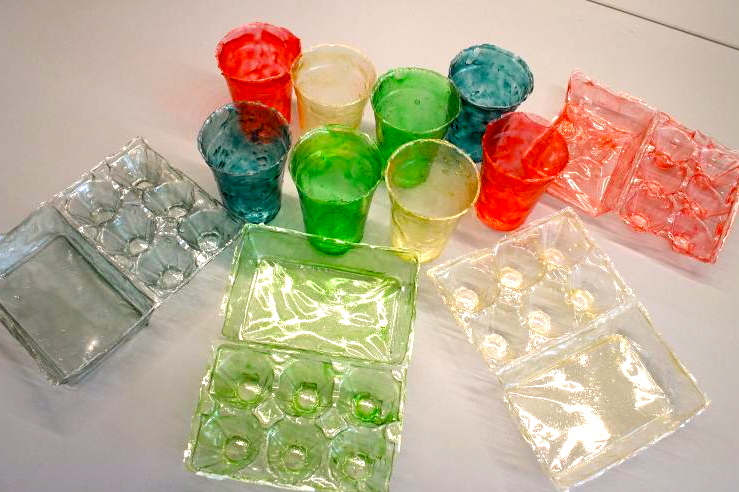Turning shrimp shells into plastic


Harvard researchers have found a way to isolate fully degradable plastic from shrimp shells. To demonstrate how hardy yet pliable their new bioplastic is, they molded it into a series of chess pieces; and then to show how it can encourage plant growth after it breaks down, they grew some peas in it.
Humans produce 300 million tons of plastic a year, but recycle only 3 percent. The rest of it goes into landfills and the ocean. Engineers have designed bioplastics using cellulose from plants, and those have been useful for packaging and simple food or drink containers. But it's been difficult to form those bioplastics into complex 3D shapes while providing the sturdiness we expect of plastic. And they've also been hard to mass-produce.
Developed by Javier Fernandez and Don Ingber of Harvard's Wyss Institute, the new bioplastic is made with chitosan, a type of chitin, the second most abundant organic material on Earth. Chitin makes up the hard outer shell of crustaceans, the armor-like cuticles of insects, and butterfly wings. The majority of available chitin comes from discarded shrimp shells.
The researchers subjected chitosan to a battery of tests and figured out that the molecular structure of chitosan is sensitive to the method used to formulate it. Then, after analyzing in detail how things like temperature and concentration affect the mechanical properties of chitosan on a molecular level, the team honed in on a method that produced a pliable liquid crystal material. (A different method yielded an unusable brittle, opaque material.)
The fabrication method preserves the strong mechanical properties of chitosan, and the resulting tough, transparent material can be used to make large, 3D objects with complex shapes using traditional, large-scale manufacturing techniques like casting or injection molding. Adding wood flour (a waste product from wood processing) helps the chitosan polymer retain its shape after the molding process.
According to the team, chitosan-based plastic is cheap and easy to make on larger scales and wouldn't take up land like plant-based bioplastics. The material can be dyed by changing the acidity of the chitosan solution; the dyes can be collected and reused when the material is recycled.
Sounds like the new bioplastic could take the place of synthetic plastic in a variety of everyday items: from trash bags to packaging to toys. "You can make virtually any 3D form with impressive precision from this type of chitosan," Fernandez says in a press release. The team molded chess pieces to illustrate the point. (Pictured with chitin, below.)
What's more, after it's discarded, the material will break down in a matter of weeks -- releasing nutrients that support plant growth as they go. To demonstrate the material's ability to encourage plant growth when it's returned to the ground, the team grew a California Blackeye pea plant in soil enriched with chitosan bioplastic over a three-week period. Watch this cute video.
A few years ago, the same researchers designed the biodegradable material Shrilk: part silk, part shrimp shell, inspired by insect cuticle. The new chitosan bioplastic is Shrilk's next iteration. Ditching the silk protein makes the chitin-based plastic cheaper and easier to make. The team is looking to move the material into a commercial manufacturing facility with partners in industry.
The work was published in Macromolecular Materials & Engineering in March.
Images: Javier G. Fernandez (top), Wyss Institute (middle)
Related on SmartPlanet:
- Recycling: Are you doing it wrong?
- How raw sewage becomes biodegradable plastic
- Q&A: Catarina Mota, co-founder, openMaterials.org
This post was originally published on Smartplanet.com